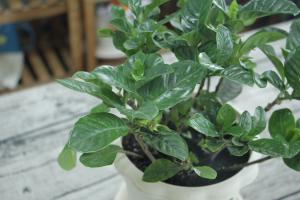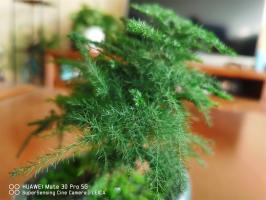Is a Pine Tree a Vascular or Nonvascular Plant?
A pine tree is a type of vascular plant. Unlike nonvascular plants, which lack a well-developed system of vessels to transport water and nutrients, vascular plants have specialized tissues that allow for the efficient movement of fluids throughout the plant. These tissues, known as xylem and phloem, are responsible for the transport of water, minerals, and sugars between the roots and leaves, and play a crucial role in the growth and survival of vascular plants like pine trees.
The Anatomy of a Pine Tree
Pine trees have a complex anatomy that allows them to thrive in a variety of environments. Like all vascular plants, they have a system of roots, stems, and leaves that work together to absorb sunlight, water, and nutrients from the soil and convert them into energy for growth and survival.
The roots of a pine tree are responsible for anchoring the plant in the ground and absorbing water and minerals from the soil. These nutrients are then transported up through the stem and into the leaves, where they are used to create energy through the process of photosynthesis. Pine trees have narrow, needle-like leaves that are adapted to survive in harsh, dry environments, and a thick, woody stem that allows them to withstand strong winds and other environmental stressors.
The Importance of Vascular Tissues in Pine Trees
Vascular tissues play a crucial role in the growth and survival of pine trees. The xylem tissue is responsible for transporting water and minerals from the roots to the leaves, while the phloem tissue is responsible for transporting sugars and other organic compounds from the leaves to the rest of the plant. This allows pine trees to efficiently absorb nutrients from the soil and convert them into energy, even in nutrient-poor environments.
In addition, the vascular tissues in pine trees are also important for the structural support of the plant. The xylem tissue provides strength and rigidity to the stem, allowing the plant to stand upright and resist the forces of wind and gravity. Without these specialized tissues, pine trees and other vascular plants would not be able to survive in many environments, and the diversity of plant life on Earth would be greatly diminished.
The Evolution of Vascular Plants
The development of vascular tissues was a major evolutionary milestone in the history of plant life on Earth. While nonvascular plants like mosses and liverworts were the dominant form of plant life for millions of years, the evolution of vascular tissues allowed plants to expand into new environments and adapt to harsher conditions.
The first vascular plants, known as tracheophytes, appeared around 400 million years ago and quickly began to diversify into a variety of forms, including ferns, horsetails, and gymnosperms like pine trees. Today, vascular plants make up the majority of plant life on Earth and play an essential role in the global ecosystem.
In Conclusion
Pine trees, like all vascular plants, have a well-developed system of vessels that allows for efficient transport of water, minerals, and nutrients throughout the plant. Without these specialized tissues, pine trees and other vascular plants would not be able to survive in many environments and the diversity of plant life on Earth would be greatly diminished. The evolution of vascular tissues was a major milestone in the history of plant life on Earth and paved the way for the development of a wide range of plant forms and the formation of complex ecosystems.

 how many times do yo...
how many times do yo... how many planted tre...
how many planted tre... how many pine trees ...
how many pine trees ... how many pecan trees...
how many pecan trees... how many plants comp...
how many plants comp... how many plants can ...
how many plants can ... how many plants and ...
how many plants and ... how many pepper plan...
how many pepper plan...































